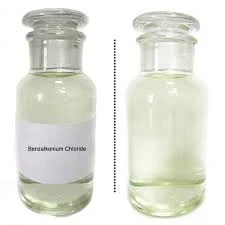poly aluminium chloride for drinking water
The Role of Poly Aluminium Chloride in Drinking Water Treatment
Poly Aluminium Chloride (PAC) is a widely used coagulant in the treatment of drinking water. Its significance lies in its efficiency in removing impurities, improving water quality, and ensuring safety for human consumption. With growing concerns over water purity and safety, understanding the role and benefits of PAC in drinking water treatment becomes increasingly pertinent.
PAC is an inorganic polymer that combines aluminum with chloride and is synthesized through the hydrolysis of aluminum salts. It differs from traditional coagulants such as aluminum sulfate in terms of its chemical structure and characteristics, which enhances its efficacy. One of PAC’s primary advantages is its ability to perform well across a wide pH range, making it highly adaptable to varying water conditions. This feature is crucial as water source characteristics can change due to environmental influences or seasonal factors.
The Role of Poly Aluminium Chloride in Drinking Water Treatment
In addition to its effectiveness in removing particulates, PAC also plays a significant role in reducing turbidity and organic matter in water supplies. High turbidity levels can hinder water treatment processes and pose health risks due to the potential presence of pathogens. By reducing turbidity levels, PAC not only enhances water clarity but also lowers the risk of microbial contamination, supporting the generation of potable water that meets health standards.
poly aluminium chloride for drinking water

Another noteworthy aspect of PAC is its lower dosage requirement compared to traditional coagulants. This lower requirement leads to reduced sludge production, which is an important consideration in waste management for water treatment facilities. The reduced sludge means fewer disposal challenges and lower operational costs, making PAC a cost-effective option for water treatment plants.
Moreover, PAC is known for its effectiveness in removing heavy metals and toxic substances. In regions where water sources are contaminated with industrial runoff or agricultural pollutants, the application of PAC in treatment processes can significantly help in the detoxification of water. This capability is crucial for safeguarding public health and protecting ecosystem integrity.
Despite its benefits, the use of PAC must be carefully monitored. Proper dosing and control are essential to avoid residual aluminum levels in drinking water that exceed safety limits. Regulatory bodies set strict guidelines to ensure that treated water is safe for consumption. Therefore, continuous monitoring and testing are integral to the treatment process, ensuring compliance with health standards.
In conclusion, Poly Aluminium Chloride is a powerful tool in the domain of drinking water treatment. Its efficiency in coagulation, ability to improve water quality, cost-effectiveness, and capability to remove harmful substances underscore its value in ensuring safe drinking water. As the global demand for clean water continues to rise, the role of PAC and similar coagulants will be central in meeting the challenges of water treatment in the 21st century. Through ongoing research and technological advancements, the effectiveness of PAC can be further enhanced, contributing to public health and environmental sustainability.
-
Water Treatment with Flocculant Water TreatmentNewsJun.12,2025
-
Polymaleic AnhydrideNewsJun.12,2025
-
Polyaspartic AcidNewsJun.12,2025
-
Enhance Industrial Processes with IsothiazolinonesNewsJun.12,2025
-
Enhance Industrial Processes with PBTCA SolutionsNewsJun.12,2025
-
Dodecyldimethylbenzylammonium Chloride SolutionsNewsJun.12,2025





